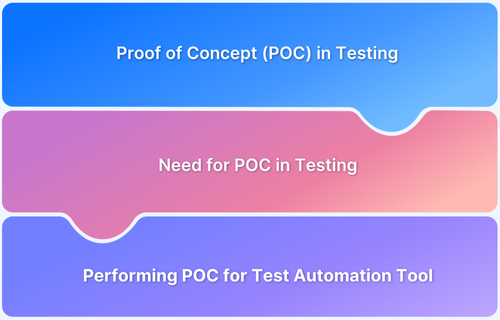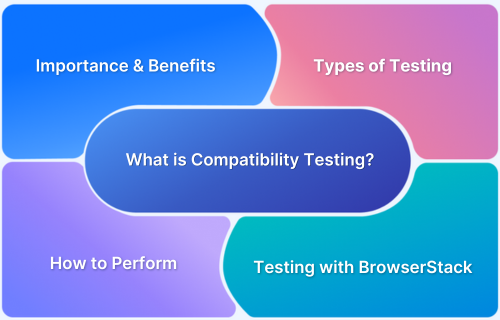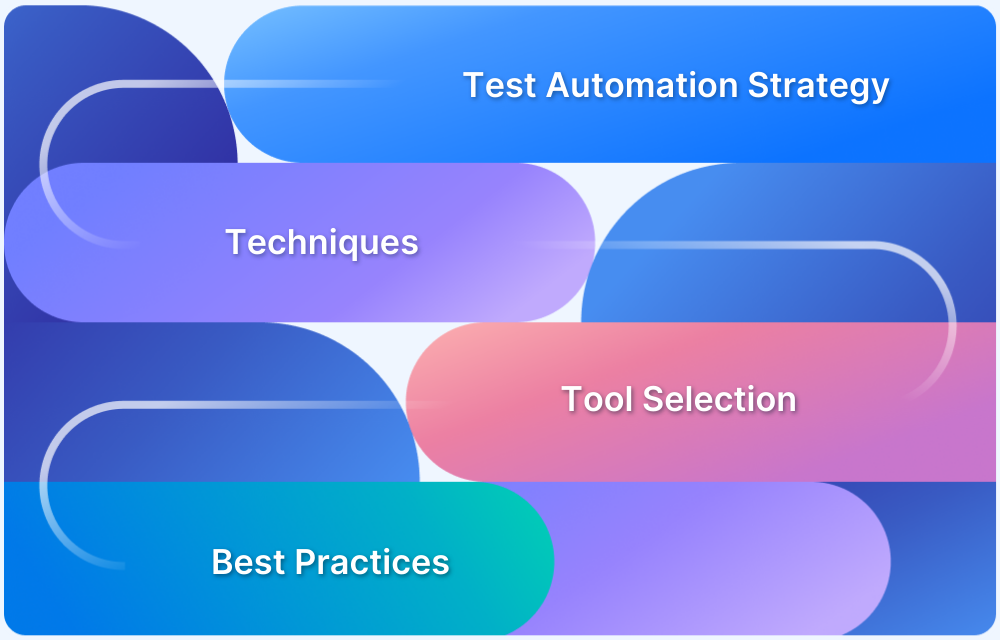Struggling to secure leadership support for your QA investments? As software delivery cycles become more complex and user expectations rise, having the right testing tools is crucial for maintaining speed, reliability, and quality.
According to the World Quality Report, 70% of organizations view quality assurance (QA) as a key driver of business value—yet, convincing leadership to invest in new tools and justify QA budgets remains a significant challenge for many teams.
This article explains how to secure C-level support, handle leadership objections, and demonstrate tangible ROI from test automation.
What is Stakeholder Buy-In?
Stakeholder buy-in refers to the level of agreement, support, and commitment that key decision-makers and influencers provide to a particular initiative—in this case, the adoption of QA tools and practices. It’s not just about gaining formal approval for a budget but ensuring that stakeholders genuinely understand, value, and champion the role of QA within the organization.
For QA leaders, stakeholder buy-in means that executives and managers view testing not as a cost center, but as a critical enabler of business success. This shift transforms QA into a shared responsibility across teams, ensuring resources, funding, and cultural support for ongoing quality initiatives.
Types of Stakeholder Buy-In for QA
Stakeholder buy-in is not one-dimensional. Different types of buy-in reflect how deeply stakeholders are engaged and how much influence they can exert to push QA initiatives forward.
- Financial Buy-In: When leadership allocates budgets for QA tools, infrastructure, and resources, it shows trust in the ROI of testing. This is often the first hurdle for QA leaders.
- Strategic Buy-In: Executives and managers acknowledge QA as a driver of organizational goals such as faster time-to-market, higher product quality, and customer retention. This ensures QA is part of the long-term roadmap.
- Operational Buy-In: Teams across development, QA, and product management adopt QA tools and integrate testing practices into their workflows. Operational buy-in is crucial for scaling automation effectively.
- Cultural Buy-In: The highest form of commitment, where quality is embedded in the organization’s culture. Leaders advocate for QA at board-level discussions, and every team member views quality as a shared responsibility.
Read More: How to set up QA processes from scratch
Importance of Stakeholder Buy-In for QA Tools
The adoption of QA tools requires more than a procurement decision; it demands organizational alignment. Without stakeholder buy-in, even the most advanced automation frameworks or testing platforms can fail to deliver business value.
The importance lies in how buy-in transforms QA from a technical activity into a strategic advantage.
- Ensures Adequate Funding and Resources: Stakeholder support secures the necessary budgets for licenses, infrastructure, and skilled personnel. This ensures QA teams are not forced to compromise quality due to resource constraints.
- Aligns QA Goals With Business Objectives: When leadership understands testing importance for business growth, QA priorities align with organizational objectives such as faster release cycles, reduced downtime, and improved customer retention.
- Accelerates Tool Adoption Across Teams: Convincing management for new tools creates a ripple effect. Once leadership is on board, development, product, and operations teams adopt QA practices more willingly, reducing resistance to change.
- Strengthens Long-Term Commitment: Buy-in is not a one-time approval. Continuous leadership engagement ensures QA initiatives receive sustained support, even during budget cuts or shifting business priorities.
- Transforms QA Into a Competitive Advantage: Stakeholder buy-in positions QA as a business enabler. Instead of being viewed as a bottleneck, QA becomes a critical driver of innovation, customer trust, and brand reputation.
Identifying Key Stakeholders and Their Interests
Every stakeholder views QA investments differently, and understanding these perspectives is crucial when preparing arguments.
- C-Level Executives: Care about testing ROI for executives, long-term savings, and how QA prevents reputational risk. They expect measurable business outcomes.
- Product Managers: Focus on faster releases, customer satisfaction, and minimizing rework. Their interest lies in risk reduction and product quality.
- Development Teams: Want seamless tool integration, reduced manual bottlenecks, and better collaboration with QA teams.
- QA Teams: Look for efficiency, test coverage, and automation benefits to improve their workflows.
By mapping interests to tool features, QA leaders can tailor messaging to each group—an essential step in stakeholder buy-in for QA.
Building a Compelling Business Case for QA Tools
Executives do not approve budgets for technology—they approve them for outcomes. Building a compelling case means framing QA benefits in terms that leadership understands.
1. Explaining Automation Benefits in Business Terms: Instead of saying, “Automation improves test coverage,” explain: “Automation reduces production defects by 40%, lowering post-release support costs and protecting customer trust.”
2. Demonstrating Testing ROI for Executives: ROI examples may include:
- Reduced release cycle time from weeks to days
- Fewer customer-reported defects leading to higher retention
- Lower manual testing costs as automation coverage grows
3. Showing how to Justify QA Budgets Effectively: A strong justification outlines not just the cost of new tools but the opportunity cost of not investing. For example, delayed releases due to inadequate QA can result in lost market opportunities, which far outweighs tool licensing fees.
Common Challenges in Stakeholder Buy-In for QA Tools
Securing stakeholder buy-in is often more difficult than implementing the QA tools themselves. Leaders face competing priorities, limited budgets, and differing perspectives, which can create resistance. Recognizing these challenges early helps QA leaders prepare stronger cases.
- Limited Awareness of QA’s Business Value: Many executives still perceive QA as a cost center rather than a value driver. Without educating executives on testing, it is difficult to secure budget approval or strategic attention.
- Budget Constraints and Competing Investments: Leadership often prioritizes initiatives that directly drive revenue. Convincing management for new tools requires demonstrating how testing ROI for executives connects to cost savings, risk reduction, and faster releases.
- Perception of QA as a Bottleneck: Some stakeholders view QA as slowing down releases instead of enabling them. Overcoming this misconception means showing how automation accelerates delivery while maintaining quality.
- Resistance to Change in Established Workflows: Teams accustomed to manual or legacy processes may resist adopting new tools. Operational buy-in requires demonstrating ease of integration and long-term efficiency gains.
- Leadership Objections to Long-Term ROI: Executives often seek immediate payoffs, but QA investments yield compounding returns over time. Communicating long-term vs short-term benefits is essential to overcoming this objection.
- Difficulty in Translating Technical Benefits Into Business Terms: Explaining automation benefits in purely technical language fails to connect with decision-makers. The challenge lies in framing quality improvements as risk mitigation, customer trust, and revenue protection.
By addressing these challenges head-on with clear data, case studies, and pilot programs, QA leaders can improve their chances of gaining meaningful stakeholder support.
Engaging Stakeholders Through Effective Communication Strategies
Even the strongest business case fails if poorly communicated. Educating executives on testing requires clarity and business alignment.
- Educating Executives on Testing Importance: Avoid technical jargon. Translate QA metrics into risk and business impact—for example, “A 10% increase in defect leakage can cost $500,000 annually in lost productivity.”
- Selling Test Automation to Leadership With Data and Demos: Data-driven presentations and live tool demos demonstrate capabilities far better than theoretical arguments. Use before-and-after scenarios to show tangible benefits.
- Aligning QA Goals With Business Objectives: Frame QA as a business enabler. Instead of presenting automation coverage percentage, show how QA helps achieve goals like faster time-to-market, higher revenue, or reduced churn.
Implementing a Pilot Program to Showcase Value
A pilot program provides evidence executives cannot ignore.
- Designing a Proof of Concept for New QA Tools: Select a critical project with visible business impact, such as automating regression tests for a high-traffic feature.
- Metrics to Track Success of Pilot Programs: Measure defect detection rate, cycle time reduction, automation coverage, and cost savings. Translate results into business impact, such as faster release delivery or reduced downtime.
- Turning Pilot Results Into Convincing Management for New Tools: Use pilot outcomes to build trust and momentum. Executives are more likely to approve budgets after seeing firsthand results that align with their priorities.
Securing Long-Term Support and Commitment
Initial buy-in is only the beginning. Sustained investment requires ongoing communication and proof of impact.
- Establishing Continuous Reporting on QA Metrics: Regular dashboards that highlight QA’s contribution to business KPIs keep leadership engaged.
- Demonstrating Sustained ROI Over Time: Show trends over multiple releases to prove ongoing efficiency and cost benefits. Longitudinal data makes it harder to cut QA budgets during downturns.
- Building Executive Advocacy for QA Investments: Cultivate champions among executives who can advocate for QA funding in board-level discussions.
Read More: Calculating Test Automation ROI: A Guide
Measuring Stakeholder Buy-In Success
Securing stakeholder buy-in is not the end of the journey; it must be measured to ensure that leadership engagement translates into sustainable outcomes. Success indicators should go beyond tool adoption and focus on business impact.
- Adoption Metrics: Track how many teams are actively using the QA tools and the growth in automation coverage. High adoption rates indicate alignment across functions.
- Executive Engagement: Measure the frequency of leadership reviews of QA metrics, funding approvals, and executive-led discussions that include QA as a strategic element. Consistent executive involvement shows that QA is embedded in business priorities.
- Business Impact KPIs: Link QA outcomes to organizational goals. Metrics may include faster release cycles, reduced defect leakage into production, improved customer satisfaction, and lower post-release support costs.
- Cross-Functional Collaboration: Evaluate how QA involvement influences collaboration between development, product, and operations. Successful buy-in often manifests in QA being included early in project planning.
- Sustained Budget Allocation: A strong sign of success is consistent or increasing budget allocation to QA over time, reflecting leadership confidence in its ROI.
By tracking these indicators, QA leaders can demonstrate that stakeholder buy-in is not only achieved but is actively driving measurable improvements across the business.
To ensure your QA initiatives receive the necessary resources and strategic focus, it’s crucial to secure leadership buy-in by clearly demonstrating the business value and aligning quality goals with organizational priorities.
Expert guidance can help you craft compelling cases that clearly articulate testing challenges and the benefits of automation, ensuring your message resonates with stakeholders to secure the leadership buy-in essential for sustained QA investment and success.
Get Expert QA Guidance Today
Schedule a call with BrowserStack QA specialists to discuss your testing challenges, automation strategies, and tool integrations. Gain actionable insights tailored to your projects and ensure faster, more reliable software delivery.
Conclusion
Securing stakeholder buy-in is half the journey; selecting the right partner ensures long-term success. BrowserStack offers a complete suite of QA and test automation solutions that align with executive priorities:
- Real Device Testing: Eliminate flakiness by testing on 3500+ real devices and browsers.
- Scalable Automation: Parallel testing accelerates releases without compromising coverage.
- Cloud-Based Infrastructure: Reduce infrastructure costs while maintaining security and compliance.
- Comprehensive Integrations: Ensure seamless fit with existing CI/CD pipelines and dev workflows.
By combining strong business justification with BrowserStack’s capabilities, organizations can secure leadership commitment and turn QA into a competitive advantage.







